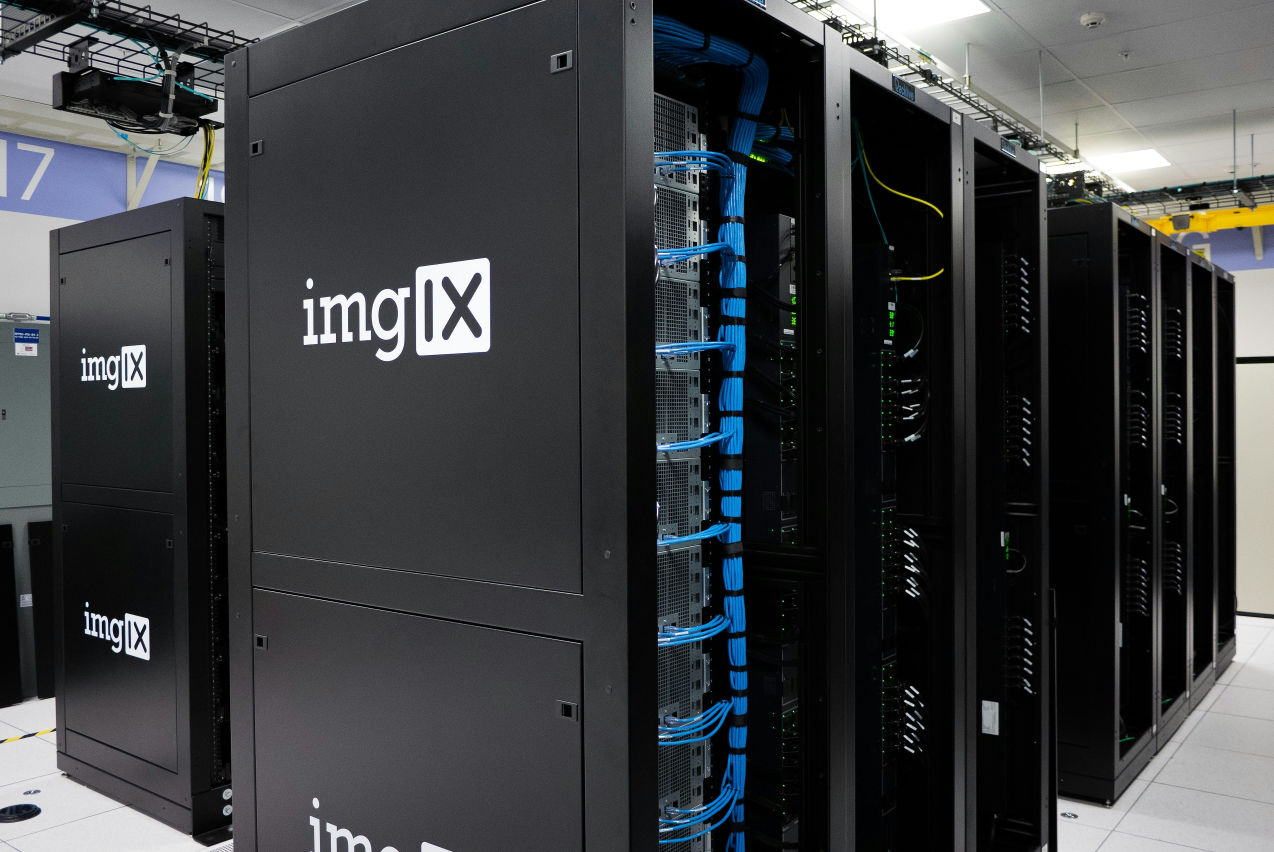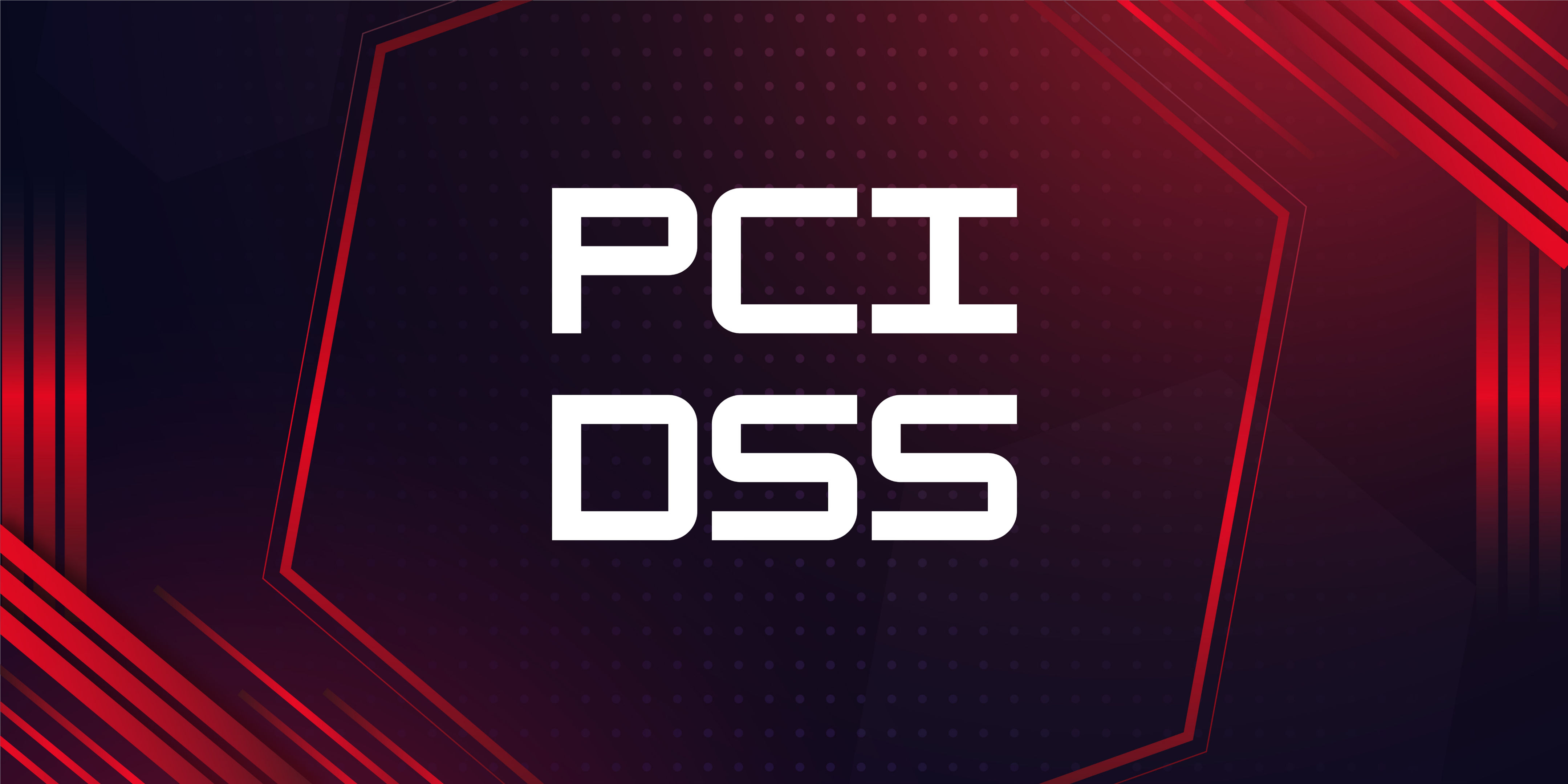Affordable Managed IT Services for Small Businesses

Small to mid-sized enterprises (SMEs) face a unique set of challenges, particularly when it comes to managing information technology (IT). With limited resources and budgets, these businesses often need help managing their IT infrastructure, which is crucial for maintaining competitive advantage and enhancing operational efficiencies. This is where managed IT services come into play, offering a tailored solution to address the specific needs of smaller enterprises.
What is a Managed IT Service Provider?
Definition of managed IT services
The practice of outsourcing business administration and management responsibilities to a third party is known as a Managed Service Provider (MSP). This model helps SMEs manage their IT infrastructure and end-user systems proactively and under a subscription model. Typically, managed IT services include remote monitoring and management of servers, networks, and endpoints, cybersecurity protection, and other IT support tasks.
By partnering with an MSP, businesses can enjoy several benefits such as reduced operational costs, access to the latest technology, enhanced cybersecurity, and the ability to focus on core business strategies without the burden of IT management.
Why Small and Medium Businesses Need Managed IT Services
The argument for transitioning to managed IT services is compelling for small businesses. First and foremost, IT can be complex and require constant attention and expertise. With their limited IT budgets and staff, small businesses might find it overwhelming to keep up with the rapid pace of technological changes and cybersecurity threats.
Managed IT services provide a solution by offering:
- Cost Efficiency: Predictable monthly costs without the unexpected expenses of hardware breakdowns, maintenance, or repairs.
- Expertise and Experience: Access to IT professionals with broad skill sets who can handle complex IT issues and deploy new technologies quickly.
- Proactive Support: Continuous monitoring of IT systems to detect and resolve issues before they cause downtime or data loss.
- Strategic IT Planning: Assistance in aligning IT infrastructure with business goals, which is vital for growth and scalability.

Benefits of Managed IT Services
Managed IT services offer many benefits that can help small to mid-sized enterprises (SMEs) survive and thrive in today's digital world. These services are designed to alleviate the pressures of day-to-day IT management, allowing business owners to focus on strategic growth while ensuring their technology supports them efficiently and effectively. Here’s how managed IT services benefit small businesses:
Cost-effective solution for small businesses
One of the most significant advantages of managed IT services is their cost-effectiveness. Traditional IT support models, where businesses react to issues as they arise (often referred to as "break-fix" models), can lead to unpredictable expenses. Managed IT services, on the other hand, operate on a fixed monthly fee that covers all IT management and support needs. This allows SMEs to budget more effectively, as they can anticipate their IT spending without worrying about unforeseen costs related to repairs or downtime. Additionally, because MSPs can leverage economies of scale by serving multiple clients, they can offer their services at a cost that is typically lower than maintaining an in-house IT team.
Time and money savings
Managed IT services save businesses a significant amount of time and money. With experts taking care of routine IT management tasks, businesses can reduce downtime caused by IT issues. Regular maintenance and proactive monitoring also mean that potential problems are identified and corrected before they can impact business operations. This approach not only saves money in terms of reduced downtime and lost productivity but also helps avoid the high costs associated with disaster recovery if a significant issue were to go unchecked.
Scalable solutions to meet business needs
As businesses grow, so do their IT needs. Managed IT services are inherently scalable and designed to grow along with the business. MSPs typically offer flexible service agreements that can be scaled up or down based on the business's requirements. This flexibility is particularly beneficial for SMEs as it allows them to add resources or upgrade systems without significant capital investments or the need to hire additional in-house IT staff. Whether it’s expanding storage capacities, adding more sophisticated cybersecurity measures, or integrating new collaborative tools, MSPs can adjust the scope of services to match the evolving needs of the business.
Focus on core business activities
One of the most crucial benefits of managed IT services is the ability for business owners to focus on their core operations without being sidetracked by IT concerns. With the assurance that a team of experts is managing their IT infrastructure, business leaders can dedicate more time and resources to developing new products, engaging with customers, and exploring new market opportunities. This focus on core activities is essential for driving business growth and maintaining competitive advantage in the marketplace.
Improved Data Security and Backup Disaster Recovery Plan
Due to limited cybersecurity resources, small businesses, in particular, are often vulnerable to cyberattacks. Managed IT services address this vulnerability head-on by implementing robust security measures that protect sensitive data. This includes regular updates to security protocols, risk assessments, and real-time monitoring to thwart potential security threats.
Furthermore, Managed Service Providers (MSPs) ensure that businesses are prepared for any eventuality with comprehensive backup and disaster recovery plans. These plans are crucial for minimizing downtime in the event of data loss due to cyberattacks, system failures, or natural disasters. By regularly backing up data and maintaining redundant systems, MSPs help ensure that a business can quickly resume operations with minimal disruption, safeguarding both productivity and profitability.
Access to Expert Support and Help Desk Services
Another significant advantage of managed IT services is their access to expert support and help desk services. This ensures businesses have 24/7 access to professionals who can assist with any IT-related issues. These services are not only responsive but also proactive, with IT specialists often able to identify and resolve issues before they affect business operations.
This support level is invaluable for SMEs, as it eliminates the need for a large in-house IT team and allows business owners to rely on expert advice and rapid problem resolution. This support extends from simple software troubleshooting to complex network issues, providing a safety net that enables businesses to operate smoothly and with confidence.

Enhanced Customer Service and Satisfaction
Managed IT services directly contribute to enhanced customer service and satisfaction. With reliable IT support, businesses can ensure that their service platforms are always operational and efficient. This reliability is crucial for maintaining customer trust and satisfaction, as clients expect quick and seamless interactions in today's digital landscape.
Moreover, MSPs can help implement advanced technologies like CRM systems that provide valuable insights into customer preferences and behaviors, enabling personalized customer service that can set a business apart from its competitors. Such technologies not only improve the customer experience but also boost customer retention and attract new clients through positive word-of-mouth.
Growth Opportunities for Small Businesses
Finally, managed IT services create substantial growth opportunities for small businesses. By outsourcing IT management, businesses can focus more on strategic growth initiatives rather than getting bogged down by day-to-day IT issues. This strategic focus is critical for small businesses aiming to expand their operations or enter new markets.
Additionally, MSPs provide scalability in services that align with business growth, supporting everything from increased data storage needs to the integration of new business applications. This flexibility ensures that IT infrastructure evolves in step with the business, supporting expansion rather than hindering it.
Types of Managed IT Services for Small Businesses
Leveraging managed IT services can significantly enhance operational efficiency and security for small businesses. Managed Service Providers (MSPs) offer various services tailored to meet the unique technology needs of small enterprises. These services help maintain daily IT operations and strategize for future growth. Below are key types of managed IT services that small businesses commonly utilize:
Network Setup and Management
Proper network setup and management are critical for the smooth operation of any business. MSPs specialize in designing and implementing networks tailored to a business's specific needs. This includes setting up network cabling, configuring routers and switches, and ensuring all network components work harmoniously. Additionally, MSPs manage the ongoing maintenance of the network, including monitoring network performance, conducting regular updates, and troubleshooting issues as they arise. This ensures consistent uptime and connectivity which are essential for business operations.
Data Backup and Disaster Recovery
Data is one of the most valuable assets a company owns. Protecting this data through effective backup and disaster recovery strategies is vital to safeguard a business from data loss due to hardware failures, cyberattacks, or natural disasters. MSPs provide data backup services that automatically back up business data to secure, off-site locations. This redundancy ensures that data can be quickly restored in the event of loss. Furthermore, MSPs develop and implement disaster recovery plans that outline specific data recovery and business continuity strategies, minimizing downtime and ensuring a business can operate as usual with little interruption.
Cloud Computing Services
These services offer businesses flexibility, scalability, and cost-efficiency. Cloud MSPs help small businesses migrate to the cloud, enabling them to securely access and store data and applications over the internet rather than on hard drives or local servers. This transition reduces the need for physical storage space and allows businesses to scale their IT resources up or down as needed, based on demand. Cloud services often include built-in redundancy and enhanced security measures, providing businesses with an added layer of data protection.
Cybersecurity Solutions and Monitoring
Cyber threats are becoming more sophisticated, so cybersecurity as a service is a top priority for small businesses. MSPs provide cybersecurity solutions that include the latest antivirus software, firewalls, and intrusion detection systems to protect sensitive business data. Beyond these defenses, MSPs also offer continuous monitoring services to detect and respond to threats in real time. This proactive approach to cybersecurity helps prevent potential breaches and minimizes the impact of any security incidents.
Help Desk and Technical Support
Technical issues can arise at any time and can hinder business productivity. MSPs offer help desk and technical support services to address these issues promptly. This support is typically available 24/7, ensuring that help is on hand whenever it may be needed. From software glitches and hardware malfunctions to user errors and connectivity issues, the help desk services cover a wide range of IT problems, providing peace of mind and allowing small business owners to focus more on their core business activities.
Software-as-a-Service (SaaS) Management
Managed IT services in SaaS management involve overseeing these applications to ensure they are optimized, secure, and seamlessly integrated with other business systems. This includes managing licenses, updating software, and providing user support and training. SaaS management helps businesses streamline their operations and improve team collaboration and productivity. SaaS has become a cornerstone for many business operations, providing applications hosted remotely and accessible online.

Hardware Setup and Maintenance
Physical hardware remains fundamental to business operations even in an increasingly cloud-centric world. MSPs provide comprehensive services that include setting up, maintaining, and repairing physical IT assets like servers, workstations, routers, and switches. Regular maintenance ensures hardware is running efficiently and helps extend its lifespan while also reducing the likelihood of downtime caused by equipment failures. This service is crucial for businesses that rely heavily on their physical IT infrastructure to operate smoothly.
VoIP (Voice over Internet Protocol) Services
MSPs help businesses implement VoIP solutions, which include features like voicemail to email, call forwarding, and teleconferencing. VoIP services transform basic voice communications into a digital format that runs over the internet, offering a cost-effective and feature-rich alternative to traditional telephone lines. This service can significantly reduce costs while enhancing communication capabilities, making it easier for small businesses to stay connected with customers and remote employees.
Mobile Device Management
With the increasing use of smartphones and tablets in the business environment, managing these devices becomes essential to protecting sensitive business data and ensuring all devices comply with company policies. Mobile Device Management (MDM) services provided by MSPs help businesses monitor, manage, and secure their employees' mobile devices connected to the company network. MDM is critical for enforcing security policies, installing updates, and remotely wiping data if a device is lost or stolen.
IT Consulting and Strategy
MSPs often go beyond managing day-to-day IT operations; they also offer consulting services to help businesses plan and strategize their IT investments. This can include advice on adopting new technologies, transforming IT infrastructure, or developing custom software solutions. IT consulting and strategic planning are vital for aligning IT initiatives with business goals, ensuring technology serves as a growth enabler rather than just a cost center.
Compliance and Risk Management
As businesses grow and regulations change, maintaining compliance with industry standards and laws becomes more complex. MSPs provide compliance and risk management services to help businesses navigate these complexities. This involves ensuring data is handled securely, audits are passed, and business practices meet regulatory requirements. Effective compliance and risk management mitigate risks, avoid legal penalties, and maintain customer trust and business reputation.
Choosing the Right Managed IT Service Provider for Small Businesses
Selecting the right Managed IT Service Provider (MSP) is crucial for small businesses that rely on technology for daily operations. The right MSP supports operational efficiency and fosters technological growth that aligns with business goals. Here’s how small businesses can ensure they choose the right MSP to meet their needs.
Assess Technical Expertise and Certifications
When evaluating potential MSPs, their staff's technical expertise and certifications should be a top priority. These qualifications are indicators of the provider's ability to manage and support various technologies that businesses depend on. Look for certifications from reputable organizations and vendors such as Microsoft, Cisco, and CompTIA, which suggest a certain level of competency and expertise in the IT field.
Additionally, inquire about the MSP's ongoing training and development programs to ensure their team is up-to-date with the latest technologies and industry practices. A well-trained and certified team can handle complex IT environments and will likely deliver high-quality services that can drive business success.
Check for Relevant Experience in Your Industry
The relevance of an MSP’s experience to your specific industry is another critical factor to consider. Each industry has unique IT requirements and challenges. For instance, healthcare organizations require stringent data security and compliance measures, while a retail business might focus more on e-commerce platforms and point-of-sale systems.
Choose an MSP with a proven track record and expertise in your industry. This familiarity can significantly improve their ability to tailor services to your specific needs, anticipate industry-related issues, and provide innovative solutions that can give your business a competitive edge.
Review Service Level Agreements (SLAs) Carefully
SLAs fundamentally set the expectations for the service delivery you can expect from your MSP. SLAs outline the metrics related to service quality, availability, and responsibilities that the MSP commits to. It’s important to review these agreements carefully to ensure they match your business’s needs.
Pay attention to details such as uptime guarantees, response times for support requests, and resolution times for IT issues. Ensure that the penalties for not meeting these service levels are clearly stated. A well-drafted SLA not only provides assurance of service quality but also sets a clear framework for accountability.
Evaluate the Provider’s Scalability and Flexibility
As your business grows, your IT needs will also evolve. Therefore, it's important to select an MSP that can scale its services to accommodate your growth and changing requirements. This means having the ability to increase resources, integrate new technologies, and expand services when needed.
Furthermore, evaluate the MSP's flexibility in terms of service offerings. Can they offer bespoke solutions if your business needs them? Are they willing to adjust their standard services to better fit your requirements? An MSP that is willing to work with you to tailor their services is often a valuable partner in the long run.
Consider the Provider's Reputation and Customer Reviews
When selecting a Managed IT Service Provider (MSP), the reputation of the provider is a critical aspect to consider. A provider's reputation can offer insights into the reliability and quality of their service. Look for customer testimonials, case studies, and independent reviews to gauge other clients' experiences. Positive feedback from current and former clients can be a strong indicator of a provider's ability to deliver effective IT solutions.
Moreover, don't hesitate to ask for references or contact existing customers directly to discuss their experiences. This firsthand information can provide a more detailed understanding of what you might expect in terms of service quality, customer support, and technical expertise. Also, consider how long the MSP has been in business; longevity can signify stability and a good reputation in the industry.

Analyze Response Times and Support Availability
Quick response times are essential when IT issues arise to minimize downtime and maintain productivity. During your evaluation of potential MSPs, inquire about their average response times and whether they offer different levels of support depending on the severity of the issue.
Additionally, it's important to consider the MSP's support hours. Do they offer 24/7 support, or are their services available only during standard business hours? For businesses that operate around the clock or in different time zones, 24/7 support is often crucial. Ensure that the MSP can provide support when it's most likely to be needed, including provision for holidays and weekends if necessary.
Look for Proactive Security Measures and Compliance Standards
Security and compliance are paramount for any business, especially those that handle sensitive data or operate in regulated industries. When choosing an MSP, it’s essential to assess their capabilities in implementing proactive security measures and maintaining compliance with industry standards and regulations.
Inquire about the MSP's security policies, procedures, and tools for protecting your data and IT infrastructure. Effective MSPs should offer a comprehensive security strategy that includes regular risk assessments, data encryption, multi-factor authentication, and continuous monitoring for threats.
Moreover, check whether the MSP has experience with regulatory compliance relevant to your industry. For example, if you're in the healthcare sector, the MSP should be familiar with HIPAA requirements; if you handle credit card information, compliance with PCI DSS is essential. A well-versed MSP in these areas can help ensure that your IT operations comply with legal and regulatory requirements, thereby protecting you from potential fines and legal issues.
Evaluating MSPs capabilities with Tier 3 Support
Tier 3 Support: This level of support is characterized by the highest technical expertise and is intended to solve the most complex problems that cannot be resolved by Tier 1 and Tier 2 support. Tier 3 typically involves system developers, engineers, and product creators who can develop solutions to new or unknown issues. Their advanced skills enable them to address problems that require a deep understanding of the system’s architecture and in-depth troubleshooting.
Evaluating MSP Capabilities: When evaluating potential MSPs, it’s crucial to ask whether they can provide Tier 3 support. Can they handle high-level issues internally, or do they need to rely on external vendors or your own in-house IT team? An MSP that can manage Tier 3 support on its own provides several benefits:
- Efficiency: Having one provider manage all tiers of support can lead to faster resolution times since there’s no need to transfer issues between different teams or companies.
- Expertise: It demonstrates that the MSP has significant technical expertise and resources, indicating a robust capability to handle complex IT environments.
- Simplicity: It simplifies the support process for your business. You won’t have to coordinate between multiple parties to get issues resolved, which can save time and reduce frustration.
Questions to Ask Potential MSPs:
- What levels of support do your services include?
- Can you provide examples of Tier 3 issues you have resolved in the past?
- In cases where you cannot resolve an issue internally, what is your process for escalating it to outside vendors or back to the client?
- Do you have dedicated specialists who are capable of handling high-complexity problems?
Internal Coordination: If the MSP does hand off Tier 3 issues to your internal team, it’s important to understand how this process is managed:
- How is information exchanged between the MSP and your internal team?
- What mechanisms are in place to ensure that your internal team receives all the necessary documentation and support to resolve the issue efficiently?
- How does the MSP track and manage the resolution progress when issues are handed off?
Choosing an MSP that can effectively manage Tier 3 support on its own can greatly enhance the reliability and stability of your IT services. It ensures that your most complex issues are handled promptly and expertly, minimizing downtime and maximizing productivity. When selecting an MSP, consider their full range of capabilities and how they align with your IT needs and business objectives.
Implementing Managed IT Services in Your Business
Transitioning to managed IT services can be a game-changer for small businesses. It allows them to leverage professional IT support and infrastructure without the overhead costs of an in-house team. Proper implementation is critical to maximizing the benefits of these services. Here’s a step-by-step guide to effectively integrating managed IT services into your business.
Conduct a Thorough IT Assessment
Before implementing managed IT services, conducting a comprehensive assessment of your current IT infrastructure is crucial. This assessment should identify all the hardware, software, and network resources currently in use and any gaps in your IT environment. It should also evaluate the performance, security, and efficiency of existing systems to understand your business's specific needs and challenges.
A thorough IT assessment helps:
- Identify inefficiencies and potential security risks.
- Determine IT needs that are not being met.
- Establish a baseline to measure the improvement from managed IT services.
Consider hiring an external consultant if your business lacks the expertise to conduct a thorough assessment. This initial step is essential for tailoring managed IT services to your business’s specific needs.
Define Specific Business and IT Goals
Clear, well-defined goals are essential for the successful implementation of managed IT services. These goals should align with your overall business strategy and address both immediate needs and long-term objectives. Common goals include improving system uptime, enhancing data security, ensuring data compliance, and boosting overall operational efficiency.
Defining your goals helps you:
- Communicate your expectations clearly with the MSP.
- Measure the success of the managed IT services against concrete objectives.
- Prioritize IT initiatives that offer the most significant benefits.
Be specific about what you aim to achieve with managed IT services, whether it's scaling IT operations, reducing costs, or enhancing cybersecurity.
Choose the Right Managed IT Service Provider
Selecting the right provider is pivotal in the implementation process. The ideal MSP should not only offer the services you need but also understand your industry and share your commitment to excellence. Refer back to the earlier discussion on choosing the right MSP, which includes evaluating their expertise, industry experience, scalability, and customer service.
When choosing an MSP, consider:
- Their technical capabilities and certifications.
- Experience with similar businesses in your industry.
- Flexibility and scalability of their services.
Develop a Clear Implementation Plan
With an MSP chosen, the next step is to develop a detailed implementation plan. This plan should outline the timeline, key milestones, and specific responsibilities of both your team and the MSP. It should cover everything from the initial setup and integration of IT systems to ongoing management and support.
A clear implementation plan ensures:
- Smooth transition with minimal disruption to daily operations.
- Clear communication and understanding between your business and the MSP.
- Timely completion of each phase of the implementation.
Regular reviews and updates to the plan may be necessary as the implementation progresses, allowing for adjustments based on real-time feedback and evolving business needs.
Communicate Changes and Expectations to Your Team
Effective communication is critical when introducing any significant change within a business, especially something as integral as IT services. It’s important to communicate the changes, their reasons, and what the team can expect during and after the transition. This communication should address:
- The benefits: Explain how managed IT services will benefit the team, such as reducing downtime, improving tech support, and enhancing data security.
- Changes in processes: Detail any changes in how your team will interact with IT resources or request support.
- Training and support: Provide information about any training sessions or support available to help team members adapt to the new systems.
Keeping your team informed and engaged not only helps ease the transition but also ensures they are supportive and can collaborate more effectively with the new MSP.
Transition IT Responsibilities to the Provider
The transition of IT responsibilities to your managed IT service provider should be structured and phased to minimize disruptions. This involves:
- Detailing the scope of services: Clearly define what responsibilities the MSP will take over and what will remain in-house.
- Setting a transition timeline: Establish a clear timeline for each phase of the transition process.
- Providing access and information: Ensure that the MSP has all the necessary access to systems and information to take over the IT responsibilities smoothly.
It’s also vital to maintain an open line of communication with the MSP during this phase to address any challenges that arise promptly.
Set Up Continuous Monitoring and Feedback Mechanisms
Once the managed IT services are in place, setting up systems for continuous monitoring and feedback is crucial. This ensures that the services meet the agreed-upon standards and allows for ongoing improvement. Elements to include are:
- Performance monitoring tools: Implement tools that continuously monitor the health and performance of your IT systems.
- Feedback systems: Establish mechanisms through which your team can report issues or provide feedback on the IT services they receive.
- Regular updates: Ensure that the MSP provides regular reports and updates on IT performance and any incidents that occur.
These tools and systems help in proactively identifying potential issues and fostering a culture of continuous improvement.
Monthly Technical Reviews and Quarterly Business Reviews
To maintain oversight and ensure the alignment of IT services with business goals, it’s important to establish a regular schedule of reviews:
- Monthly technical reviews: Focus on the technical aspects of the IT services, such as system performance, incident reports, and security status. This is crucial for ensuring that the IT infrastructure remains robust and responsive to the needs of the business.
- Quarterly business reviews: These should assess how well the IT services support broader business objectives and discuss any strategic adjustments needed. This is an opportunity to review the business's evolving needs and ensure the MSP’s services continue to align with them.
These reviews not only help maintain operational alignment and quality but also strengthen the relationship between your business and the MSP, creating a partnership that can adapt to changing business needs.
Benefits of Managed IT Support Services
Managed IT support services offer various benefits that can transform how small businesses handle their technology needs. By providing expert support and proactive services, these providers play a critical role in the overall health and efficiency of a business's IT environment.

Role and Importance of Managed IT Support Services
Managed IT support services are the backbone of a business's IT infrastructure. They ensure that systems run smoothly and efficiently, crucial for maintaining productivity and avoiding downtime. By offloading IT responsibilities to a managed service provider, businesses can focus on their core activities without being bogged down by technical issues. This support extends from everyday troubleshooting to strategic technology planning, offering businesses access to expertise and technologies that might otherwise be out of reach due to cost or complexity.
24/7 Help Desk Support for Small Businesses
One of the standout features of managed IT support services is 24/7 help desk support. This round-the-clock availability ensures that businesses can get immediate assistance whenever IT issues arise, regardless of the time of day or night. For small businesses, in particular, this is invaluable as they often lack the resources to staff their own full-time IT support team. This continuous support minimizes downtime, ensures issues are addressed promptly, and helps maintain continuous business operations.
Proactive Monitoring and Maintenance of IT Systems
Managed IT support services are not just reactive but also proactive. Providers actively monitor and maintain their clients' IT systems to prevent issues before they escalate into serious problems. This includes regular updates, security patches, and system optimization tasks. Proactive monitoring identifies potential threats and performance bottlenecks, enabling early intervention and reducing the risk of system failures or security breaches. This approach helps maintain system health and optimizes IT performance, which can contribute to better business outcomes.
Troubleshooting and Issue Resolution
When issues do occur, having a reliable, managed IT support provider ensures that troubleshooting and resolution are handled swiftly and efficiently. These providers employ skilled technicians who can diagnose and resolve various IT issues, from simple software glitches to complex network failures. Their expertise often allows them to identify and fix problems faster than in-house staff, which can lack specific knowledge or experience. Moreover, many managed IT support services use advanced diagnostic tools and technologies that provide them with deep insights into the systems they manage, further aiding in the quick resolution of issues.
Software and Hardware Updates and Upgrades
Keeping software and hardware updated is crucial for the security and efficiency of IT systems. Managed IT support services ensure that all components of a business's technology infrastructure are current with the latest updates and upgrades. This routine maintenance helps protect against vulnerabilities, improves functionality, and ensures compatibility with other technologies. Providers also assess when hardware upgrades are necessary, helping businesses plan and budget for future needs without unexpected expenses or disruptions.
Network Management and Optimization
Effective network management and optimization are vital for maintaining high performance and reliability of business operations. Managed IT support services to monitor network traffic and performance, identify bottlenecks, and optimize data flow. This proactive management helps prevent downtime and enhances the efficiency of the network, ensuring that business operations are uninterrupted and more responsive to the company's demands.
On-site and Remote Support Options
Managed IT support services typically offer both on-site and remote support options, providing businesses with flexible and convenient solutions to address their issues. Remote support allows for immediate troubleshooting and problem-solving, which is invaluable for quick fixes and minor issues that do not require physical presence. For more complex problems, on-site support ensures that a technician is present to handle the situation directly, providing a comprehensive service that addresses all potential IT challenges.
Service Level Agreements (SLAs) and Response Times
SLAs are an integral part of managed IT support services, defining the standard of service that a business can expect. These agreements typically outline response times, availability, and performance metrics that the service provider commits to. SLAs ensure that businesses receive timely and effective support, reducing the impact of IT issues on operations. By setting clear expectations for response times and service quality, SLAs provide businesses with peace of mind and a clear framework for accountability, ensuring that their IT infrastructure is managed effectively.
How RedZone Technologies Can Help
RedZone Technologies stands out in managed IT services by offering tailored solutions for small and medium businesses. With a focus on creating a robust IT environment, RedZone Technologies leverages a strategic approach, established partnerships, and a range of solutions to meet the unique needs of growing companies. RedZone Technologies can transform your IT operations and drive your business forward.
Our Approach to Managed IT Services for Small and Medium Businesses
RedZone Technologies adopts a proactive and client-centered approach to managed IT services, prioritizing small and medium businesses' specific needs and challenges. Our method involves thoroughly assessing your current IT infrastructure to identify areas for improvement, potential risks, and opportunities for technological enhancements. We focus on delivering scalable IT solutions that grow with your business, ensuring you have the technological capability to meet current and future demands. Our services are characterized by:
- Customized IT Roadmaps: Developing strategic plans that align IT with business goals, focusing on long-term growth and efficiency.
- Proactive Monitoring and Maintenance: Ensure your IT systems operate smoothly with minimal downtime through continuous oversight and preventive care.
- Responsive Support: Offering remote and on-site support to address IT issues swiftly and effectively, minimizing disruption to your business operations.
- Virtual Security Operations: Our Virtual Security Operations offers expertly managed security services that monitor and protect your digital environment around the clock.
Key Partnerships
At RedZone Technologies, we believe in the power of collaboration to deliver top-notch IT solutions. We have established Key Partnerships with leading technology providers, including major hardware manufacturers and software companies. These relationships enable us to offer our clients cutting-edge technologies at competitive prices and first-hand expertise and support directly from the source. Our partnerships enhance our service offerings by:
- Access to Advanced Technologies: Keeping your business at the forefront of technological advancements.
- Cost-Effective Solutions: Leveraging our partnerships to provide cost-efficient IT solutions that fit your budget.
- Expertise and Support: Gaining direct support from our partners ensures that any issues are swiftly and effectively resolved, backed by our allies' comprehensive knowledge and resources.
Featured Solutions/Related Services
RedZone Technologies offers a comprehensive suite of IT solutions designed to address the diverse needs of small and medium businesses. Our featured solutions and related services include:
- Cybersecurity Solutions: Protect your business from cyber threats with advanced security measures, including next-generation firewalls, intrusion detection systems, and comprehensive cybersecurity audits.
- Cloud Services: Facilitating cloud migration and management, providing flexible and scalable resources that enhance collaboration and data accessibility.
- Data Backup and Disaster Recovery: Implementing robust backup solutions and detailed disaster recovery plans to ensure data integrity and continuity of operations under any circumstances.
- VoIP Services: Offering modern communication solutions that integrate voice, video, and data services over the internet, reducing costs and improving communication efficiency.
RedZone Technologies is dedicated to providing high-quality, tailored IT solutions that solve immediate technical challenges and support strategic business growth. With our expert team, strong partnerships, and advanced IT services, we are well-equipped to help your business harness the power of technology to achieve sustained success.

Conclusion
Small and medium-sized enterprises (SMEs) face unique challenges that demand effective and efficient IT solutions. Managed IT services have proven to be a crucial strategy for businesses looking to leverage advanced technologies without the substantial overhead of an in-house IT department. As we've explored, the benefits of engaging with a Managed Service Provider (MSP) like RedZone Technologies include enhanced operational efficiency, improved cybersecurity, scalable IT infrastructure, and access to continuous support and expert advice.
RedZone Technologies, with its client-centered approach, deep industry partnerships, and comprehensive range of IT solutions, stands out as a leader in providing managed IT services tailored to the specific needs of small and medium businesses. By focusing on proactive strategies, from regular maintenance and monitoring to advanced cybersecurity and cloud solutions, RedZone ensures that businesses are equipped to handle current technological demands and prepared for future challenges.
Partnering with RedZone Technologies can transform your IT operations, enabling your business to operate more efficiently and securely, knowing that your IT infrastructure is in expert hands. Contact us today for enhanced operational efficiency, improved cybersecurity, scalable IT infrastructure, and access to continuous support and expert advice. As technology advances and integrates deeper into the core of business operations, the value of a reliable MSP will only increase, making RedZone an invaluable ally in your business journey.
FAQs
What is a Small Business's Average Cost of Managed IT Services?
The cost of managed IT services for small businesses can vary widely depending on several factors, including the scope of services, the business size, and specific IT needs. On average, small businesses might expect to pay anywhere from a few hundred to several thousand dollars monthly. These costs are influenced by what services are included, such as 24/7 monitoring, cloud services, cybersecurity protections, and on-site support. MSPs also commonly offer tiered pricing models, allowing businesses to choose a package that best fits their budget and requirements. To get a precise estimate, businesses should discuss their specific needs with potential MSPs and request detailed quotes.
How Long Does It Typically Take to Implement Managed IT Services?
The timeline for implementing managed IT services can vary based on the complexity of the business's existing IT infrastructure and the specific services being set up. Typically, the process can take a few weeks to several months. Initially, the MSP will thoroughly assess the company's current IT systems and needs. Following this, they will outline a strategic plan for integration, which may involve setting up new hardware, configuring software, and transitioning services. Throughout this process, regular communication and planning meetings ensure that the implementation is seamless and minimizes any disruption to daily operations.
What is the Difference Between Traditional IT Support and Managed IT Services?
Traditional IT support, often called "break-fix" support, operates on a reactive basis—problems are addressed as they occur, typically under a pay-as-you-go model. This can lead to unpredictable costs and uneven service quality. In contrast, managed IT services adopt a proactive approach. MSPs monitor and manage a business's IT infrastructure continuously to prevent issues before they arise. This model often involves a fixed monthly fee, which helps businesses budget their IT expenses more predictably. Managed IT services also typically offer more comprehensive support packages, including regular maintenance, security measures, cloud management, and strategic IT planning, which are not usually part of traditional IT support contracts.
Can Managed IT Services Integrate with Existing In-House IT Teams?
Yes, managed IT services can effectively integrate with existing in-house IT teams. This collaboration is often crucial for maximizing the efficiency and effectiveness of a business's IT operations. Managed Service Providers (MSPs) like RedZone Technologies work alongside in-house IT staff to complement and enhance their efforts. This partnership allows in-house teams to focus on strategic projects and core business initiatives while the MSP handles the day-to-day management and maintenance of the IT infrastructure.
The integration process typically involves:
- Clear role definition: Establish clear responsibilities and boundaries to ensure the MSP and the in-house IT team know their specific duties and how they fit into the overall IT strategy.
- Communication protocols: Establish effective communication channels to facilitate seamless collaboration and information sharing between the MSP and the in-house team.
- Joint planning sessions: Regular meetings to align strategies, discuss upcoming IT developments, and coordinate projects and initiatives.
This collaborative approach ensures that the business benefits from both the specialized expertise of the MSP and the internal knowledge and experience of the in-house team.
How Can Small Businesses Measure the ROI of Investing in Managed IT Services?
Measuring the return on investment (ROI) of managed IT services involves evaluating how the services impact the overall efficiency, cost savings, and operational improvements within a business. Here are some key metrics that small businesses can use to assess their ROI:
- Cost savings: Calculate the reduction in costs associated with hiring full-time IT staff, purchasing and maintaining hardware, and dealing with unplanned downtime or cybersecurity breaches.
- Uptime and availability: Monitor improvements in system availability and uptime, which translate directly into increased productivity and potentially higher sales or service levels.
- Performance improvements: Assess network and application performance enhancements that can lead to faster response times and better customer service.
- Scalability and flexibility: Evaluate how effectively the MSP has enabled the business to scale its operations or adapt to market changes, which can provide long-term strategic benefits.
- Security incidents: Track the reduction in security incidents and breaches, which helps avoid potential losses and protect the business’s reputation.
By quantifying these factors, businesses can build a clear picture of the tangible and intangible benefits of their investment in managed IT services, helping justify the expenditure and plan for future investments.
 Security Updates
Security UpdatesUnderstanding IT Compliance: Scope, Benefits, and Challenges
Discover what IT compliance is, its importance, benefits, risks of non-compliance, frameworks, and how to achieve robust IT compliance in your organization.
 Security Updates
Security UpdatesImplement Secure Browsing with Powerful SSL Decryption
Explore the essentials of SSL decryption, its importance, challenges, and best practices for enhancing security and compliance for business in a detailed guide
 Security Updates
Security UpdatesTransitioning from Proxy Firewalls to Endpoint Security
Explore the evolution from proxy firewalls to endpoint security, enhanced threat detection, data encryption, and comprehensive protection for modern networks.
 Security Updates
Security UpdatesExpert IT Risk Assessment: Protect Your Business Today!
Mitigate potential IT threats with our comprehensive risk assessment guide, ensuring your digital infrastructure. Ensure your business is secure an...
 Security Updates
Security UpdatesEssential Guide to Best Practices in Compliance Security
Explore essential strategies for compliance security in this comprehensive guide. Learn about safeguarding your business and meeting regulatory sta...
 Security Updates
Security UpdatesSecure Your Data with Expert Cloud Database Solutions
Learn efficient solutions and secure your cloud databases with encryption and compliance features, ensuring data safety and privacy across all plat...
 Security Updates
Security UpdatesA Guide to Cloud Network Technology: Benefits and Types
Unlock the potential of cloud network technology for seamless connectivity. Learn and scale solutions that drive business innovation and growth via...
 Security Updates
Security UpdatesAffordable Managed IT Services for Small Businesses
Explore top-managed IT services for small businesses to boost efficiency and security. Get expert insights and practical tips to optimize your IT o...
 Security Updates
Security UpdatesSecure Your Network with Gateway Security Solutions
Explore the essentials of gateway security: learn about its importance for network protection and best practices to safeguard your digital assets e...
 Security Updates
Security UpdatesDisaster Recovery Testing: Ensure Business Continuity
Explore effective disaster recovery testing strategies in this guide to maintain business continuity, prevent data loss, and minimize downtime duri...
 Security Updates
Security UpdatesMaximizing Security: Vulnerability Management Lifecycle
Explore the complete guide to the Vulnerability Management Lifecycle to boost your cyber resilience and secure your business IT infrastructure effe...
 Security Updates
Security UpdatesYour Network with Endpoint Security Management
Explore our comprehensive guide on Endpoint Security Management to understand its importance, how it works, and best practices for robust network s...
 Security Updates
Security UpdatesEnsuring Security Compliance: Tips, Insights & Strategies
Discover the essentials of security compliance, its importance, frameworks, and tools. Learn how to protect data and meet regulatory standards effe...
 Security Updates
Security UpdatesBoost Your Security with Internal Penetration Testing
Dive into internal penetration testing with our in-depth guide. Learn the essentials, techniques, and best practices to fortify your cybersecurity ...
 Security Updates
Security UpdatesEgress vs Ingress: A Guide to Data Traffic Management
Understand Egress vs Ingress in data management. Learn and explore their roles, traffic analysis, risks, and best practices for network and cloud s...
 Security Updates
Security UpdatesPrevent Credential Harvesting to Protect Your Precious Data
Understand credential harvesting. Learn how it works, common techniques, its impact, and strategies to prevent and mitigate attacks to secure your ...
 Security Updates
Security UpdatesSecure Your Big Data: Top Solutions for Data Security
Protect your valuable data with our robust big data security solutions. Learn about the threats and Safeguard against cyber threats and ensure comp...
 Security Updates
Security UpdatesSecure Your Network with Advanced Management Solutions
Explore the details of comprehensive network security management: Learn key strategies, best practices, and tools to safeguard your digital environ...
 Security Updates
Security UpdatesGuide to On-Path Attacks: Protecting Your Cybersecurity
Learn about on-path attacks in this comprehensive guide, exploring definitions, types, consequences, and key prevention strategies to safeguard you...
 Security Updates
Security UpdatesExploring Managed Cloud Services: A Comprehensive Guide
Dive into the Managed Cloud Services with our in-depth guide. Explore benefits, types, and best practices to enhance your business's cloud strategy...
 Security Updates
Security UpdatesComprehensive Guide to Ubiquitous Computing: Impact & Future
Explore the details of ubiquitous computing, from its core concepts and layers to its societal impact, key technologies, applications, and future p...
 Security Updates
Security UpdatesClone Phishing Explained: Detection and Prevention Guide
Discover how clone phishing works and its impact. Learn effective strategies to identify, prevent, and respond to these sophisticated email threats...
 Security Updates
Security UpdatesHow to Secure Your Business with Cyber Security Insurance
Explore the essentials of Cyber Security Insurance, covering its importance, types of coverage, benefits, and considerations for businesses in the ...
 Security Updates
Security UpdatesEfficient Data Spooling Solutions For Streamlined Operation
Learn How To Efficiently Manage And Store Your Data With Our Reliable Data Spooling Services. Keep Your Information Organized And Accessible With T...
 Security Updates
Security UpdatesMaximizing Compliance & Risk Management: Expert Strategies
Learn how to ensure business success with effective compliance and risk management strategies. Explore definitions, differences, frameworks, and ch...
 Security Updates
Security UpdatesUnderstanding MDF vs IDF: Key Differences & Benefits
Explore the crucial differences and examples between MDF and IDF in networking, understanding their roles, functions, and impact on network infrast...
 Security Updates
Security UpdatesRedZone Wins CRN's Top Security 100 & MSP 500 Awards 2024
RedZone Technologies earns CRN's Security 100 & MSP 500 Awards, affirming its leadership and innovative approach in the cybersecurity and IT manage...
 Security Updates
Security UpdatesJames Crifasi Speaks on Cybersecurity at Tech Conference
Join James Crifasi, CTO & COO of RedZone Technologies, at the Tech Conference as he explores cybersecurity's role in driving business growth and ad...
 Security Updates
Security UpdatesRedZone's James Crifasi Wins SonicWall's Technical Hero Award
CTO James Crifasi of RedZone Technologies earns SonicWall's Technical Hero of the Year, exemplifying unparalleled dedication to cybersecurity and I...
 Security Updates
Security UpdatesHow to Encrypt Email in Outlook
Learn how to encrypt email in Outlook with our step-by-step guide. Secure your messages using S/MIME, Office 365 Encryption OME, and add-ins for pr...
 Security Updates
Security UpdatesWhat Is Security Monitoring? Importance and Tools
Explore the importance of security monitoring, its key roles, types, and how it protects organizations against threats, ensuring compliance and pro...
 Security Updates
Security UpdatesServer 2012 R2 End of Life: Implications and Next Steps
Learn about Server 2012 R2 end of life: Understand its impact, key dates, risks post-EOL, and explore upgrade options and migration strategies for ...
 Security Updates
Security UpdatesProtect Personal Data: Smishing and Phishing Prevention
Know how to identify and protect against smishing and phishing attacks. Learn the techniques, types, and preventive measures for personal and busin...
 Security Updates
Security UpdatesSmurf Attack Guide: Prevention & Detection Strategies
Explore prevention & recovery from Smurf Attacks: Understand DDoS defense, detection signs, and secure network practices in our detailed cybersecur...
 Security Updates
Security UpdatesWhat is a Bad USB Attack, and How Do You Prevent It?
Learn about Bad USB attacks, their various forms, and strategies for safeguarding devices. Learn how to mitigate risks with effective prevention te...
 Security Updates
Security UpdatesKey Differences Between DOS Attack vs DDOS Attack
Explore the key differences between DDoS vs DoS attacks, their types, impacts, and prevention strategies in our comprehensive guide to enhance cybe...
 Security Updates
Security UpdatesUnderstanding the Impact of a Ping of Death Attack
Explore the ins and outs of Ping of Death attacks. Understand how they work, their impact on networks, and strategies to prevent them to keep your ...
 Security Updates
Security UpdatesThe Power of the Human Firewall: Your First Line of Defense
Discover the critical role of the human firewall in cybersecurity, combining employee vigilance with technology to protect against cyber threats ef...
 Security Updates
Security UpdatesStateful Firewall vs. Stateless Firewalls: What's the Difference?
Learn the key differences between stateful and stateless firewalls and how they protect your network. Discover the right choice for your security n...
 Security Updates
Security UpdatesUnderstanding the 4 Levels of PCI Compliance
Explore PCI DSS Compliance with RedZone: Key steps to protect card data and ensure secure transactions. Learn about compliance levels and tips for ...
 Security Updates
Security UpdatesWhat Is a Security Breach and How to Prevent Them
Learn how to effectively guard your business against security breaches with RedZone Technologies. Discover simple steps to keep your data safe and ...
 Security Updates
Security UpdatesUnderstanding Tailgating in Cybersecurity
Understand tailgating attacks in cybersecurity: what they are, how they work, and effective strategies for prevention to keep your business...
 Security Updates
Security UpdatesWhat is a Managed Service Provider and Its Benefits
Explore the role of Managed Service Providers (MSPs) in enhancing IT efficiency and cybersecurity for businesses, covering benefits, servi...
 Security Updates
Security UpdatesBreach Prevention: 5 Best Practices to Protect Your Data
Learn about data breaches: what they are, their impact, and how to prevent them. Explore best practices for securing your business against cyber th...






